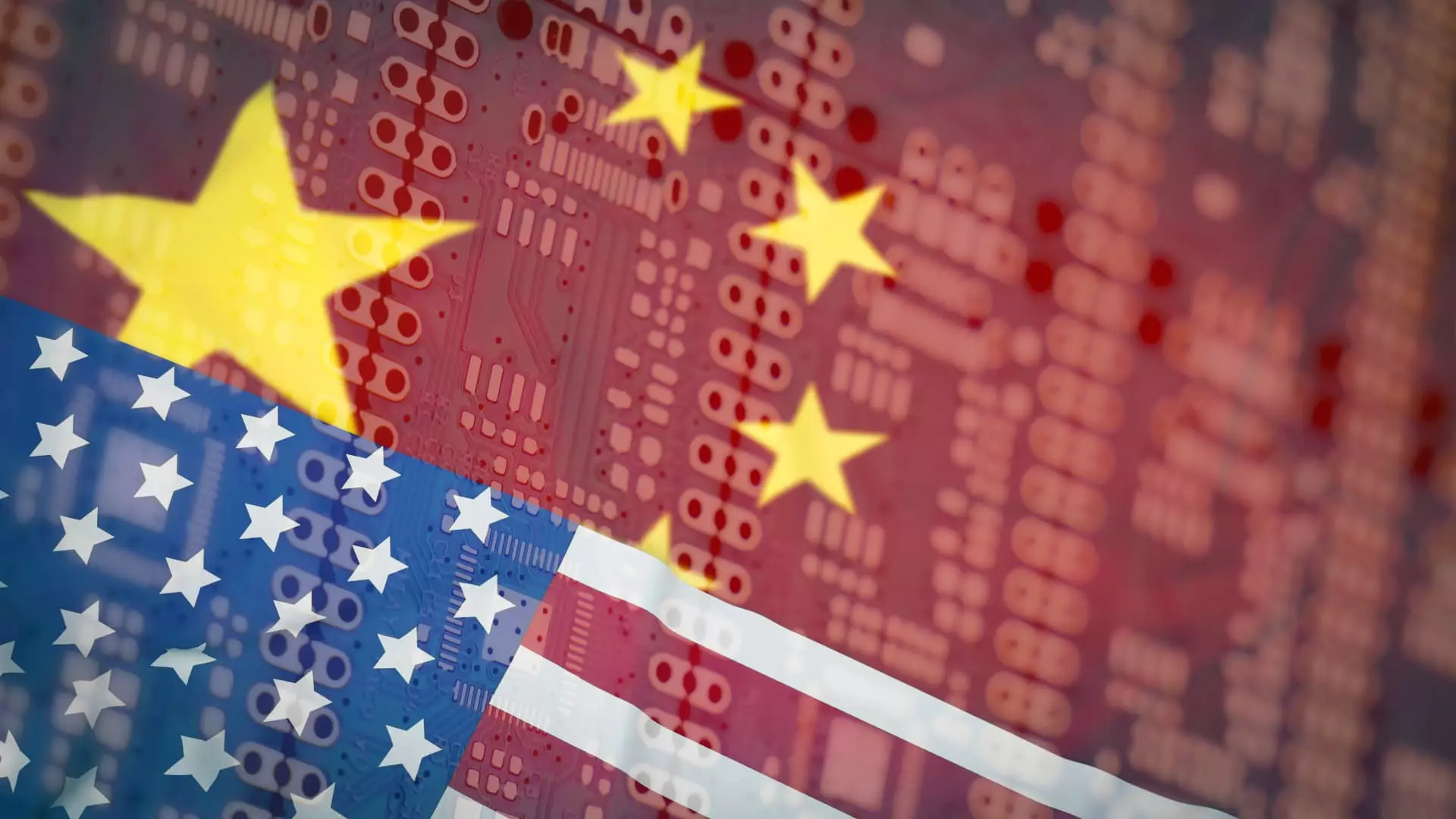In an era defined by technological rivalry, Tencent and Baidu are demonstrating an unwavering commitment to advancing artificial intelligence (AI) capabilities, even as geopolitical tensions complicate access to critical components like semiconductors. Both companies have devised strategic approaches to mitigate the impact of stringent export controls imposed by the U.S., particularly under the administration of President Donald Trump. This persistent innovation amidst adversity not only serves as a testament to their resourcefulness but also highlights the dynamic landscape of global technology.
These enterprising firms are not just adapting; they are thriving by stockpiling essential resources, refining their existing technologies, and investing in homegrown alternatives. With an acute awareness that the U.S. has tightened its grip on the export of high-performance chips, China’s tech giants are capitalizing on their current inventory while exploring new avenues to drive AI development forward. This strategy ensures they remain competitive while facing a supply chain landscape fraught with uncertainty.
Tencent: The Power of Inventory Management
During discussions regarding AI training and performance, Tencent’s President Martin Lau reported that the company is operating with a “robust stockpile” of graphics processing units (GPUs). This approach is increasingly critical as GPUs have become fundamental for training sophisticated AI models that require immense computational power. Lau emphasized that contrary to the prevailing belief that larger clusters of GPUs are imperative for cutting-edge developments, Tencent has achieved significant training outcomes with a more compact setup of high-end chips.
This revelation speaks volumes about the company’s agility and understanding of resource optimization—pioneering a path that circumvents dependence on expansive GPU clusters while still achieving desired results. Furthermore, Lau indicated that Tencent is actively engaging in “software optimization” to enhance the efficacy of its GPU deployment, thus demonstrating a shrewd balance between hardware investment and sophisticated software development.
Moreover, Lau’s endorsement of smaller, less power-hungry models signifies a strategic pivot in AI development. This shift not only promotes efficiency but also aligns with global sustainability trends, showcasing Tencent’s foresight and adaptability in a field characterized by rapid advancement.
Baidu: Leveraging Full-Stack Capabilities
On the other side of the tech landscape, Baidu is leveraging its full-stack AI capabilities to drive innovation despite challenges regarding access to the latest chips. Dou Shen, president of Baidu’s AI cloud business, highlighted the company’s unique combinations of cloud infrastructure, AI models, and practical applications like ERNIE, its intelligent chatbot. By fostering an ecosystem that integrates these elements, Baidu positions itself as a formidable player even without the latest semiconductor technologies.
Baidu’s emphasis on software optimization and cost-effective model management reveals a strategic understanding of the evolving competitive landscape. As foundation models contribute to an insatiable demand for computing power, Shen asserts that the ability to effectively manage GPU resources has transformed into a key competitive edge. This approach significantly reduces operational costs, which is crucial for long-term sustainability and innovation in AI ventures.
Additionally, Baidu’s advocacy for the advancement of domestic semiconductor technology underscores a proactive stance towards self-sufficiency. This ambition aligns with China’s broader goal of elevating its domestic semiconductor industry, as the nation endeavors to lessen its reliance on foreign technology amidst ongoing trade tensions.
The Broader Implications of Localized Semiconductor Development
China’s push towards developing a robust domestic semiconductor ecosystem has sparked discussions about its long-term implications for the global technology sphere. Experts like Gaurav Gupta from Gartner note that while Chinese companies may not yet rival U.S. tech giants in GPU capabilities, considerable strides have been made. This gradual ascension towards self-reliance and independence from Western technology could shift competitive dynamics, redrawing the landscape of global tech innovation.
The strategy of stockpiling critical components coupled with advances in domestic semiconductor manufacturing not only fortifies the operational capacity of companies like Tencent and Baidu but also signals a shift in geopolitical technology power. Additionally, if U.S. restrictions continue, the effective diversification of semiconductor sources could offer Chinese firms an invaluable edge, ensuring they maintain operational continuity.
The Voices of Concern from U.S. Executives
Amid the fierce competition, there are voices of concern within the U.S. tech industry regarding the repercussions of stringent export controls. Nvidia CEO Jensen Huang recently labeled the export restrictions as a failure, arguing that they inadvertently harm American businesses by stymying innovation at home. This perspective raises vital questions about the sustainability of current policies and what they mean for the future of technology in a rapidly evolving global landscape.
As Tencent and Baidu demonstrate resilience through innovation and resourcefulness, the ongoing dialogue about chip export restrictions illuminates the complex interplay between government policy and corporate strategy. This narrative encapsulates not only the competitive spirit of these tech giants but also the larger implications of their advancements on the global technological ecosystem.

